The modern showrooms are flooded with types of flooring materials which are exciting due to innovation in material chemistry and technology. However certain old materials still rule hearts of many. Terrazzo is one of them. It is a flooring material made by the mixture of marble, granite, quartz and other materials. All the chips are poured into a cement binder. It can be refinished repeatedly. It is often used in public buildings due to its long-lasting strength. It can be bought in the tile form. It is a composite material either poured in place or precast or hydraulically pressed as tiles. Terrazzo has its applications in floor and wall decorative finishes.
Also Read:
Marble Flooring: One of the Most Luxurious Flooring Material
Granite vs Marble: Make a Right Choice

For any material, one of the most important factors is how environment-friendly it is. And when it comes to terrazzo flooring tile, it is typically made of 72% post-consumer materials. Depending on the types of materials used, terrazzo can be used both for outdoors as well as indoors. Designers are seeing terrazzo as an alternative to cold stone floors and busy tiles, an alternative that has minimization of concrete with various textures and advantage of various colors. Terrazzo can be applied as large, poured flooring option and even as floor tiles. But traditional terrazzo floors are more expensive than terrazzo tiles.
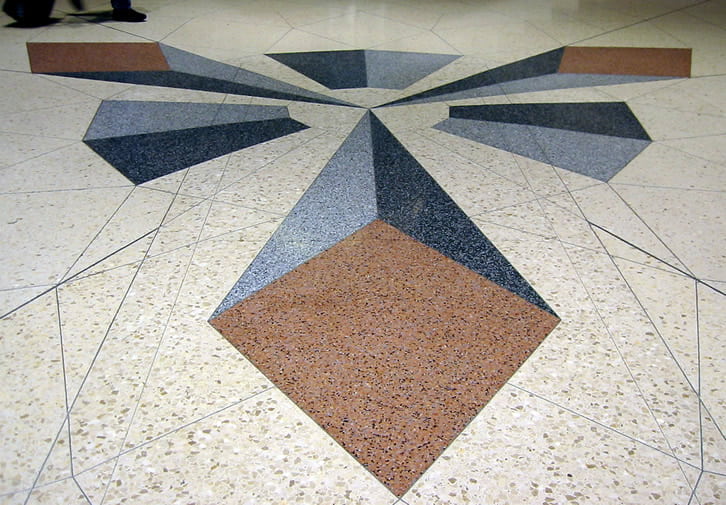
Characteristics of Terrazzo
- It is a man-made but composed of natural materials.
- The terrazzo flooring is hard, heavy, durable and long lasting.
- It is sustainable.
- It is non-porous.
- It is not slippery like vitrified tiles.
- It is available in variety of designs.
Types of Terrazzo Flooring
There are various types of flooring materials in terrazzo based on the variety of the material used and the type of bonding used for them. Some of them are listed below:
01. Epoxy Terrazzo
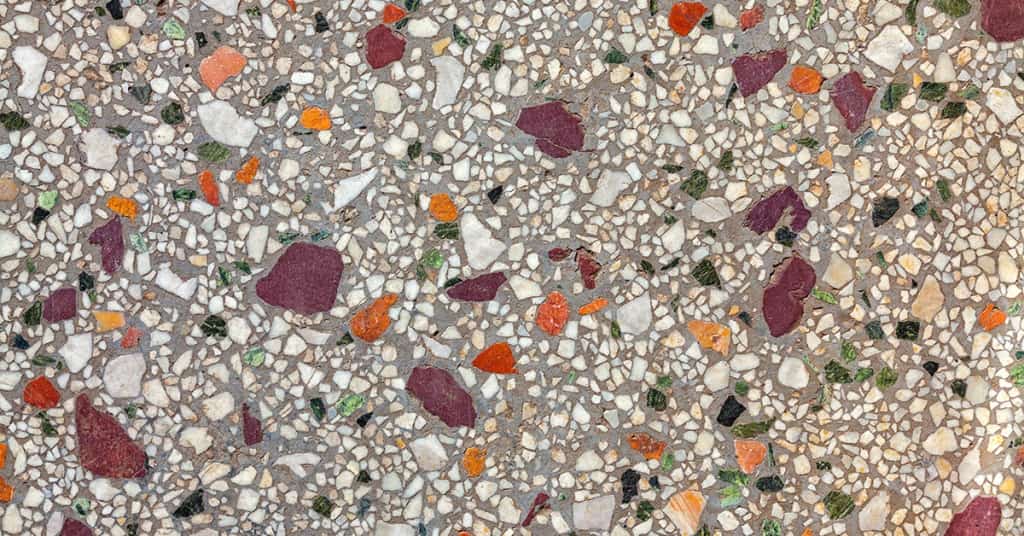
Epoxy resin terrazzo can be used on the concrete as well as on the wooden base. Epoxy flooring is easy to maintain, cost-effective and beautifully colored. It is not able to withstand harsh weather conditions and therefore needs to be restricted to indoor use.
02. Cement Terrazzo

It is long lasting and durable, non-slippery and attractive. The water content of the mixture needs to be low, to avoid any cracking of content of cement. Cement terrazzo is considered one of the best flooring options in terrazzo.
03. Rustic Terrazzo
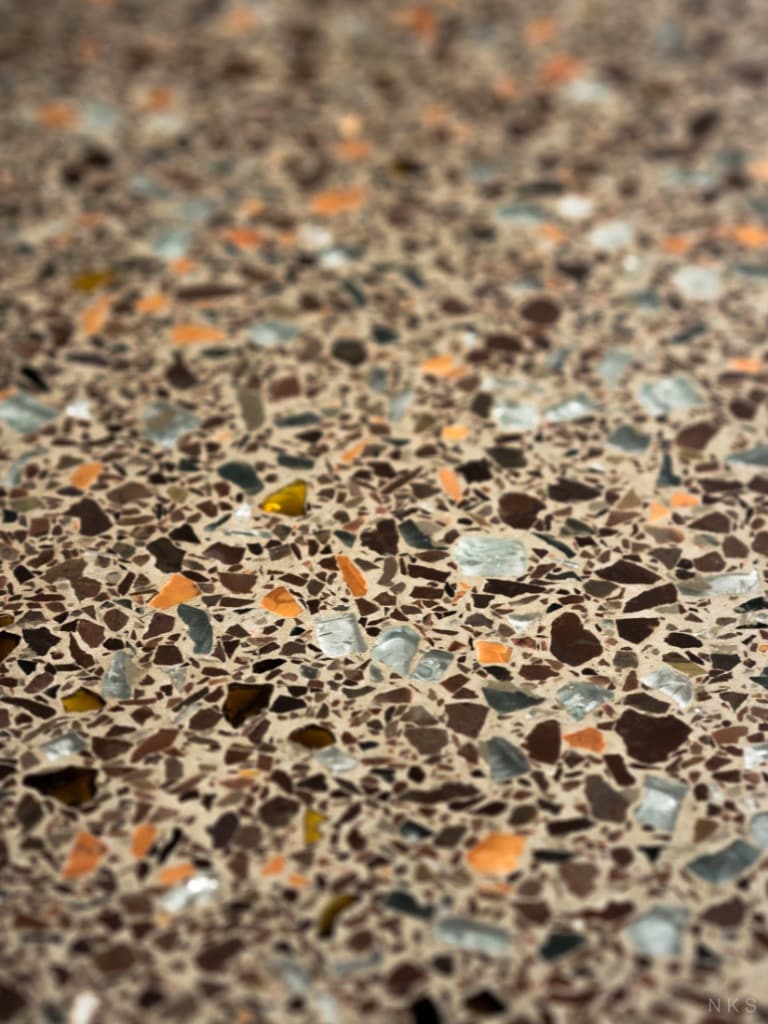
It provides a rough surface for slip resistance. Hence it is used for both indoors and outdoors. It provides a textured surface. It can be even used for landscaping the garden. When done in white cement, it adds different flavor and fragrance to the floor.
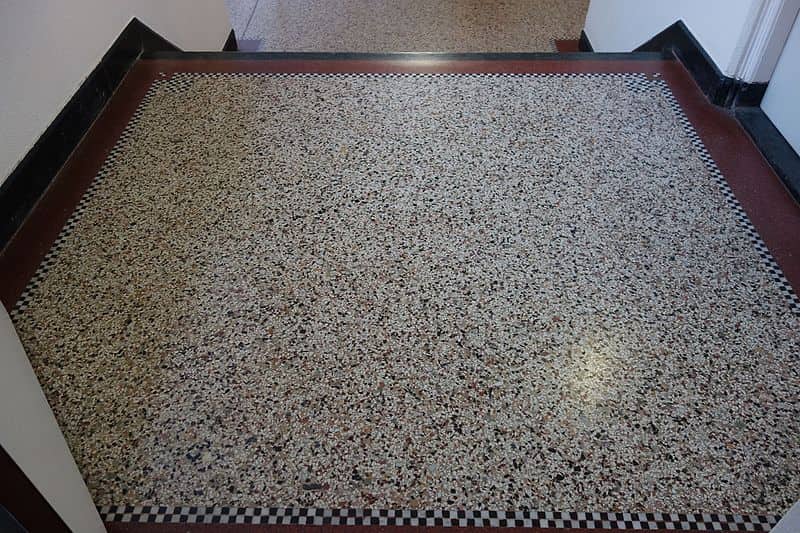
04. Monolithic Terrazzo
It is often used for large areas like schools and offices. It is of great quality and highly durable. Besides, its maintenance is easy. It is a cost-effective option for flooring. It is resistant to wear and non-slippery.
05. Polyacrylate Terrazzo
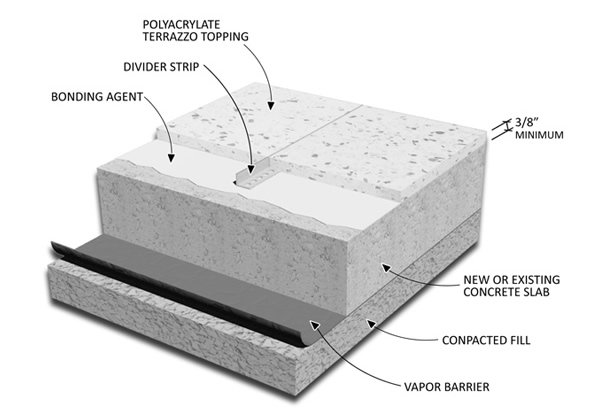
It is suitable for outdoor works because the mixture of terrazzo is resistant to harsh conditions. Polyacrylate terrazzo systems cure quickly in comparison to traditional terrazzo. It can be installed in a single day because they are usually bonded to an existing concrete slab.
How to Lay Terrazzo on Floors?
The following are the steps to lay terrazzo on floors:
- Prepare the concrete slab by putting some grooves into the base using the circular saw equipped with a masonry blade. Each groove should be spaced out atleast three feet diagonally from each other. The purpose of these grooves is to protect the eventual surface of the floor from any fissures that may occur with the terrazzo.

- Sweep the floor and soak it with clean water using the pressure washer. Using a mixture of hydrochloric acid and water, wash it down again with the metal divider strips to the network of control joints.
- To make the proper terrazzo mixture use Portland quick-dry cement and marble chips. Mix them using the wheelbarrow and adding the precise amount of water.
- With one wheelbarrow amount of mixture, apply it according to the floor spread and press them correspondingly with the trowel. Apply further amounts of marble chips randomly on the floor so that there are a bunch of marble chips loosely scattered. Use the floor roller again to pack the terrazzo mix together and to expel voids that might have formed during the application process.
- Let the terrazzo mixture dry for approximately 2 days. Start polishing using the coarsest grade of grinding stones first and then gradually work with fine grade stones, making sure that you cover each and every inch of the floor. The floor is polished enough when the divider strips and marble gives a noticeable shine. Then use a pressure washer to remove the dust formed by polishing.
- Sometimes the air bubbles left over on the surface of the floor appear. This can be removed by applying a generous amount of cement mixture or slurry, made up of quick-dry cement and water on to the floor. Make sure that it spread very thinly to cover those tiny holes, and scrape off the excess layers with the trowel.
- Do another round of polishing with your floor grinder using the finest grade to finish it off and to give that flawless sheen to the new terrazzo flooring.
Pros and Cons of Using Terrazzo Tiles
Advantages
The Advantages of Terrazzo Flooring are as follows:
01. Aesthetic Appeal
- It has a unique look of its own. The look that is offered by terrazzo is unlike any other flooring.

02. Versatile
- It comes in wide varieties of colors and color combination. These tiles are also lightweight and come in a variety of sizes, shapes, and styles.
03. Environment-Friendly
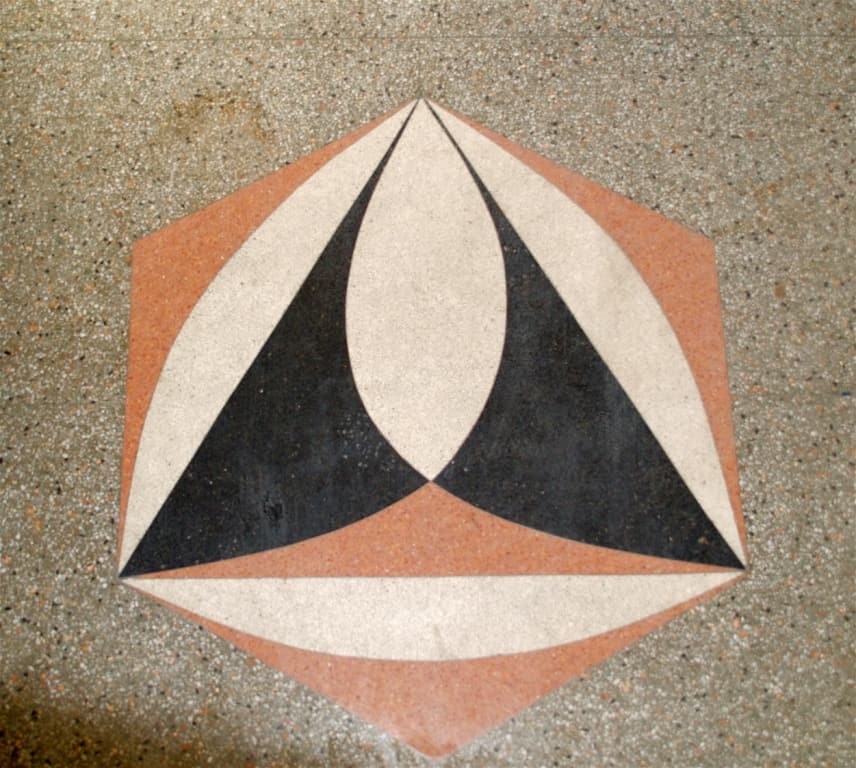
- Many terrazzo manufacturers use recycled materials to create the aggregate, specifically glass, porcelain, and metals. So it does not have a negative impact on the environment.
04. Durable
- It is very durable and last for a lifetime if maintained properly. It is reinforced with concrete and has bits of marble, glass or stone in it. So, it can hold up to a lot of usages over a longer period of time and still look like new. It is majorly used in high traffic areas of the home like dining room, kitchen and staircase.
Also Read:
Things to Keep in Mind While Planning Kitchen for Your House!
Ideas to Modernize Your Kitchen!
12 Tips to Make Your Dining Room Design More Appealing!
05. Healthy
- Properly sealed terrazzo is non-porous and resistant to microbes and mold, making it a safe flooring surface.
06. Easy Maintenance
- The terrazzo is easy maintained by sweeping and mopping from time to time. It does not stain easily with anything. Also, it does not absorb liquids very easily so it can be easily cleaned with a wet mop or with variety of cleaners.
- Terrazzo is green because it is made from natural materials. There are no volatile organic compounds in Terrazzo. It is usually made from stone chips and scraps so it has a high percentage of recycled material.
Disadvantages
The Disadvantages of Terrazzo Flooring are as follows:
01. Cost
- It is the biggest drawback of using terrazzo flooring as it is the most expensive flooring. It needs skilled labor. Only professionals have the training to install such tiles, hence it is expensive than any other tiles.
02. Cracks
- The main concern with terrazzo is that it can crack if it is not properly installed.
03. Cold and Hard
- If you don’t have sub-flooring, then terrazzo is pretty cold to walk on in winters.
04. The Tedious Process of Installation
- The installation of terrazzo tile requires a professional team. It is a highly specialized process which leads to high cost. During installation, a layer of concrete, sandy concrete and a mixture of stone or glass chips are poured. A finish coat is applied, followed by polishing.
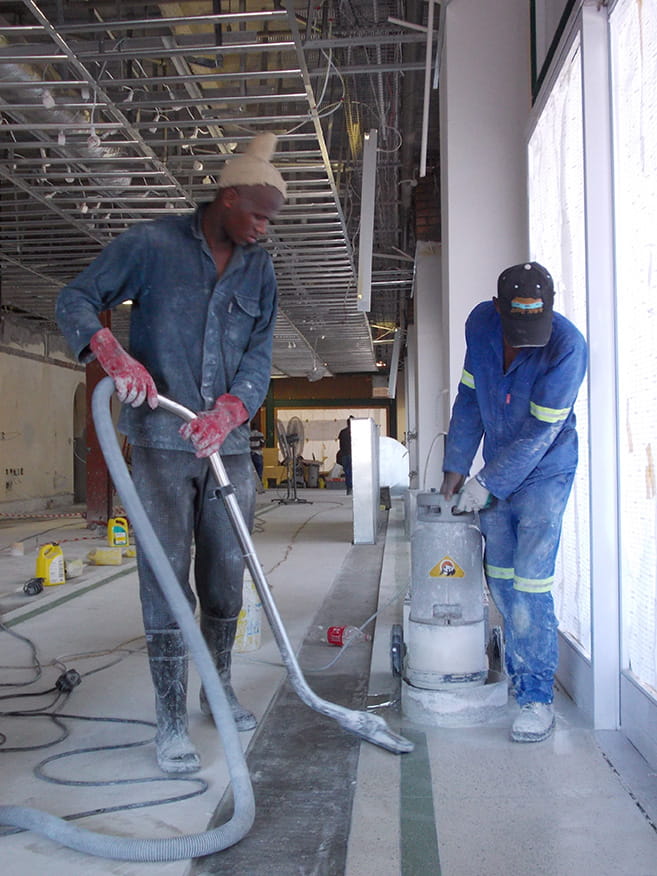
05. Time Consuming
- The installing and pouring process needs time and hence cannot be used where time is of essence.
Also Read:
10 Types of Stones that can be Used for Masonry
Advantages & Disadvantages of Glass as a Building Material
Curing of Concrete: Things to Keep in Mind While Curing



